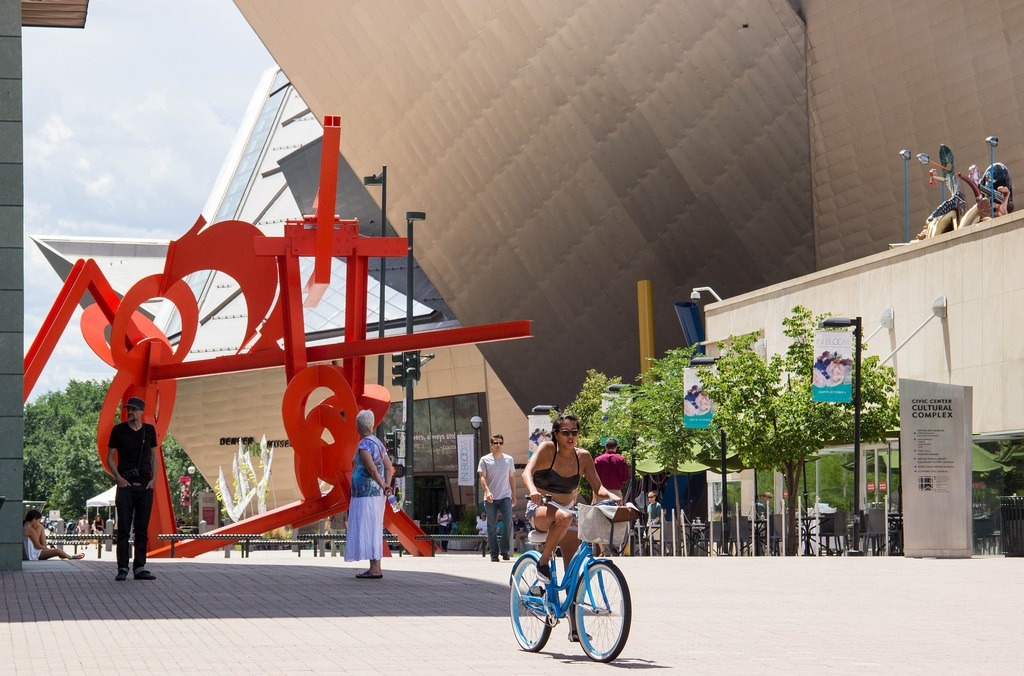
August 13, 2015; Colorado Independent
Denver’s regional approach to arts and culture funding was lauded when it was introduced in 1988, but today’s cultural leaders are upset about the inequity between Denver’s five heavyweight arts bodies and the rest of the region’s nearly 300 cultural organizations, reports the Colorado Independent.
Presently, the city allots one-tenth of one percent of sales-and-use taxes to the Denver Scientific and Cultural Facilities District, or SCFD. This money is then divided among three tiers, with tier one institutions (the Denver Art Museum, the Denver Botanic Gardens, the Denver Center for the Performing Arts, the Denver Museum of Nature and Science, and the Denver Zoo) receiving the majority of the funding. In fact, if voters approve new recommendations from the SCFD Reauthorization Task Force in 2016, these five organizations could receive 57 percent of the estimated $52 million in annual SCFD revenues. This would leave 26 percent of SCFD revenues for 27 groups in Tier II. The remaining 17 percent would be split among the 247 groups that make up Tier III.
Unsurprisingly, Tier II and III leaders are opponents of the recommendations and have made sound arguments for a stronger reallocation of funding. These arguments center on location, diversity, and accessibility.
Sign up for our free newsletters
Subscribe to NPQ's newsletters to have our top stories delivered directly to your inbox.
By signing up, you agree to our privacy policy and terms of use, and to receive messages from NPQ and our partners.
First, critics of the proposed plan take issue with the fact that more than half of the funding will be presented to five cultural organizations in Denver. Because the SCFD receives contributions from seven counties (Adams, Arapahoe, Boulder, Broomfield, Denver, Douglas, and Jefferson), it seems unfair to funnel the majority of tax revenues to one city. Susan Honstein, chair of a cultural group, notes that the population in the region has shifted, and that other counties have grown and subsequently deserve more of the money.
Second, Tier III members have raised concerns about the institutions that benefit from most of the money. Tony Garcia, one of the Reauthorization Task Force board members and the director of a Tier III organization serving Latinos in Denver, calls the funding “a civil rights issue.” Garcia dismisses the Tier I organizations as irrelevant to the Latino community, which comprises about one third of the total Denver population. In the words of the Colorado Independent, the new recommendations “tilt too much toward white city folks with money.”
Finally, the accessibility of the Tier I organizations has been questioned. A family of four would pay $50 or more to attend the Denver Zoo or Denver Museum of Nature and Science. To see a play at the Denver Center for the Performing Arts, families of four would be shelling out at least $120. Broader accessibility considerations include accessible transportation (a thorn in Boulder’s side, after their rail system was deferred to 2040 due to lack of funding) and cultural accessibility. Many in the Denver region want to support cultural organizations that are more reflective of Latino and African American residents.
Voters will decide on the fate of SCFD funding in 2016. In the meantime, Northern Colorado cultural organizations, which recently announced a plan to follow Denver’s lead in providing tax funding to scientific and cultural institutions, may want to press pause until this dispute has been resolved.—Maggie Hodge Kwan












